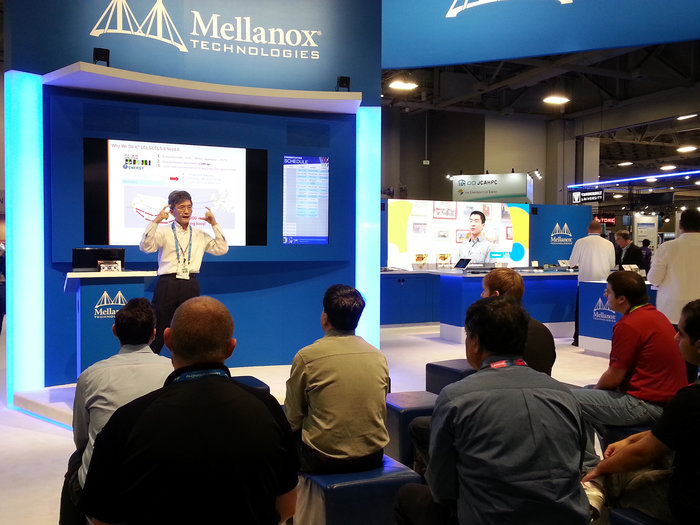If Utah companies ever believed they are the only ones looking for more workers — especially workers from underrepresented groups — they needed only to hear the words from John West last week.
The general chair of the supercomputing conference SC16 last week in Salt Lake City, West made it clear that workforce needs in the tech world are deep and vast.
“Many of us spend our careers thinking hard about the technologies that we work with every day, but those technologies aren’t possible without the workforce that imagines them. HPC is a driver of radical change and of radical understanding of our society and of our world,” West said during a welcome prior to the keynote presentation of the six-day conference, which brought together nearly 12,000 people from 68 nations to discuss high performance computing (HPC), supercomputing, networking, storage and analysis.
“I don’t think a day goes by without news of breakthroughs in drug discovery, improved safety for our cars and invalidating long-standing theories about the nature and structure of the universe. All of this is made possible by HPC and by all of you sitting here today. But we don’t talk often enough about the people that create HPC and how we make it accessible to scientists, engineers, educators and researchers around the world,” he said.
The HPC community faces two key workforce challenges, he said. The first involves growing the workforce to meet the increasing demand for HPC “as more communities come to rely on advanced computing in their daily work,” he said.
While there are no HPC-specific statistics, the U.S. Bureau of Labor Statistics reports 200,000 jobs in computing go unfilled annually in the U.S., and that figure is expected to reach 1 million by 2022. “Clearly, our community accounts for just a portion of this need, but recruiting HPC professionals today is already difficult and will clearly get worse,” West said.
The second challenge is to get more women and minorities engaged in the profession. “These account for two-thirds of the U.S. workforce today but very little of computing as a whole,” he said.
U.S. Department of Commerce statistics indicate that only 29 percent of STEM (science, technology, engineering and math) jobs are held by women. A 2016 National Science Foundation report indicates that women account for only 15 percent of engineers, 8 percent of mechanical engineers, about 12 percent of computer hardware engineers and aerospace/aeronautical/astronautical engineers, 25 percent of computer and mathematical scientists, and 30 percent of physical scientists.
“We need to cast the net wide and deep, bring in every voice, every budding expert, every ‘moon-shot’ idea. Today, when we look up who makes up our community, we find that HPC is roughly 80 percent male and more than 80 percent Caucasian, but we need diverse backgrounds to bring diverse ideas to the table, if we want to be successful in meeting the technical challenges that we face.”
The SC16 conference included several elements as ways of “including many voices that represent the future of our community,” West said.
For the first time at the conference, onsite childcare was available, freeing parents from choosing between family needs and the desire to attend the conference. The first class of a student program included nearly two-thirds attending their first SC conference, and with females accounting for 22 percent of the program’s total. This year’s event also featured a new challenge to demonstrate how computing can aid in the understanding of social change.
“Studies tell us that one of the reasons cited by women and minorities who don’t choose computing as a profession is the perception that computing doesn’t have a direct impact on societal and humanitarian issues,” West said.
The conference also included a program called Women in IT Networking at SC (WINS), combining efforts of SC, the National Science Foundation and the U.S. Department of Energy to “jumpstart the careers of women network engineers by giving them an intense, hands-on experience in building SCinet,” West said, referring to a new scientific network aimed at addressing the prevalent gender gap that exists in information technology. The WINS program was introduced at the SC conference last year in Austin, Texas.
“These,” West said last week, “are just a few of the many efforts underway that I hope will position SC as one of the premier laboratories for long-term change in the demographics of our workforce.”
Tech worker shortage is not unique to Utah
- Details








